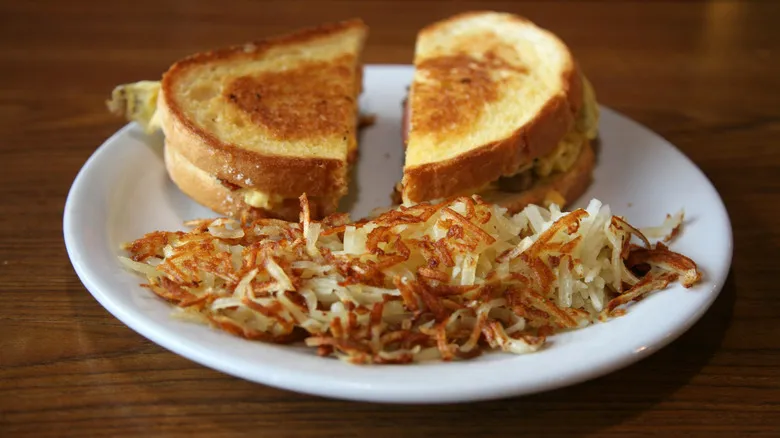1. Using the wrong potatoes
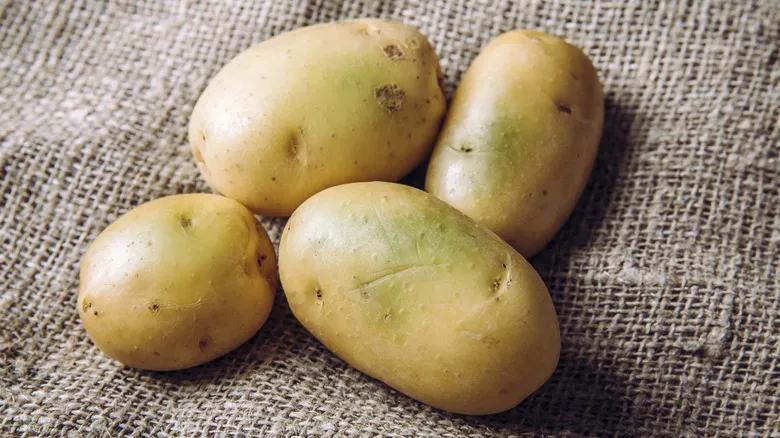
It appears that everyone has their own take on hash browns. From Gordon Ramsay's culinary creations to McDonald's hash brown patties and Trader Joe's frozen options, they are ubiquitous in our daily lives. However, despite their popularity, many home cooks struggle to prepare them properly, and it all begins with the crucial first step: selecting the right potatoes.
While waxy potatoes may seem appealing due to their creamy texture and richer flavor compared to russets, this is where many go wrong. "In general, I recommend steering clear of potatoes with excessive moisture," advises Vannesa Bordoy, executive chef at Graduate Nashville. "Waxy varieties will lead to a soggy outcome. It's best to avoid red potatoes, fingerlings, and even Yukons, as they may not yield the best results."
The ideal choice for hash browns is russet potatoes. They consistently deliver crispy results because they have a higher starch content and lower moisture levels than waxy potatoes. When selecting your potatoes, be cautious of any that are green, as this indicates the presence of solanine, a bitter and potentially harmful substance if consumed in large amounts. Additionally, chefs and co-owners of Seed to Sprout, Alex Mazzucca and Cara Duerr, emphasize, "It's best to avoid potatoes that have sprouted or show black spots. Always look for firm, clean skin."
2. Cutting potatoes into the wrong shape
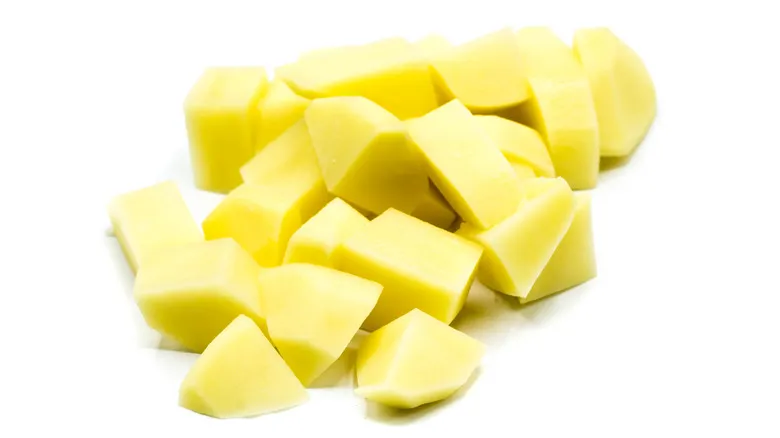
Hash browns and home fries are distinct dishes, despite some people mixing them up (I, for one, didn’t realize the difference until I was about 20, which is a bit embarrassing). The issue arises when the potatoes aren’t cut correctly, as this can interfere with the cooking process for hash browns. Instead of achieving a crispy texture, you might end up with a soggy, greasy mess, or at best, a different outcome altogether.
"You want to avoid large potato pieces, so steer clear of thick french fry-style cuts or large cubes, as they can hinder the crispiness of hash browns," advises Vannesa Bordoy. Instead, Alex Mazzucca and Cara Duerr recommend, "Cut your potatoes as finely as possible." In addition to avoiding fries and cubes, skip round cuts as well. Shredded potatoes yield hash browns with the ideal texture, allowing them to cook evenly and maximizing the surface area for crisping. There are several effective methods for shredding them.
Using a high-quality grater can be beneficial, as sharp blades will expedite the process. If you want to save time and are willing to invest a little, consider getting a food processor, which can produce perfect strands in just minutes. If you already own one but aren’t sure how to use it for this purpose, look for the grater attachment and consult the instructions; you’ll be surprised at how simple it is.
3. Forgetting to rinse the potatoes
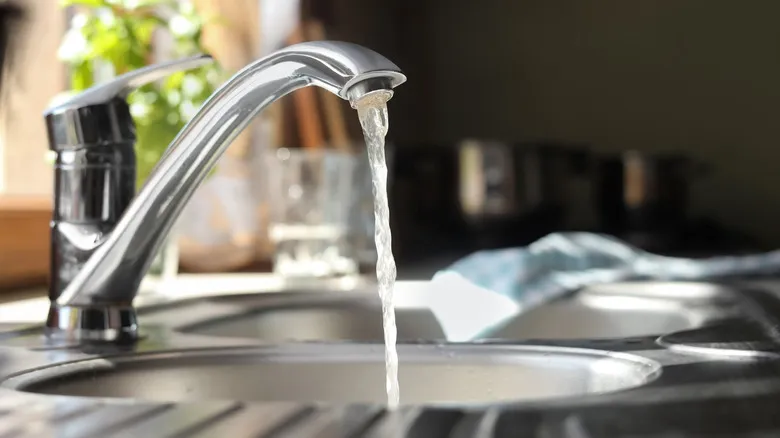
It may seem unusual to rinse potatoes, right? After all, they are a vegetable, and we typically don’t rinse other vegetables after chopping them. (Yes, despite what you may have been told, potatoes are indeed vegetables.) However, the starch content in potatoes sets them apart from other vegetables like zucchini or chard. If you don’t wash away that starch, your hash browns could suffer.
Why is that? Starch has some distinct cooking characteristics. While a small amount can contribute to a delightful crispiness in your baked and fried dishes by absorbing moisture, too much can lead to the opposite outcome. According to Vannesa Bordoy, if you leave excess starch on your potato shreds, they will turn out gummy rather than crunchy. Additionally, Alex Mazzucca and Cara Duerr point out that an excess of starch can negatively affect the flavor of hash browns and alter their texture.
To rinse potato shreds, simply place them in a mesh strainer and run water over them, gently tossing to ensure all the shreds are rinsed. Afterward, tap the strainer a few times to remove any excess water.
4. Failing to dry your potatoes

Neglecting to dry your potatoes can hinder their crispiness, which is a common source of disappointment for many home cooks when it comes to hash browns. "Just as failing to rinse them can result in excess starch that creates a gummy texture," explains Vannesa Bordoy, "too much moisture will prevent the hash browns from achieving that desired crispy crust."
To avoid this, Alex Mazzucca and Cara Duerr advise: "Ensure your potatoes are thoroughly dried before preparing your hash browns to keep them from becoming mushy and to maintain their crispiness." Similar to making latkes or potato pancakes, the secret lies in effectively drying the shredded potatoes by using a towel. Remove them from the sieve and spread them out on a dish towel—use two if you're preparing a large quantity. Twist the towel into a classic hobo bindle and squeeze it over the sink. If they remain damp, switch to fresh towels and repeat the process.
5. Using the wrong pan
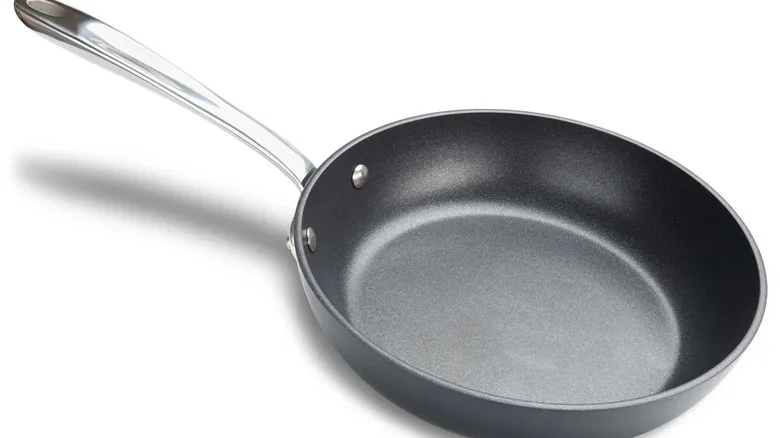
The debate over which pan to use for specific dishes could easily fill entire cookbooks. Many chefs have strong preferences regarding the best options, and home cooks who are not familiar with reliable materials like cast iron or stainless steel often feel apprehensive about using them. The reality is that the ideal pan for making hash browns is a well-seasoned cast iron skillet. Its smooth surface excels at evenly distributing heat and achieving a satisfying crunch without sticking.
"We suggest opting for a heavier pan, such as cast iron or stainless steel, to prevent your oil from burning too quickly," recommend Alex Mazzucca and Cara Duerr. "It's best to avoid aluminum or Teflon whenever possible." However, be cautious: stainless steel cannot be seasoned, so if you're unsure about using it, consider another option. In general, Vannesa Bordoy advises, "Pans that tend to stick to the potatoes are a definite no," so steer clear of unseasoned cast iron.
If you haven't yet transitioned to cast iron, now is the time. Not only do chefs endorse it, but every home cook I've spoken to who has embraced it swears by its unmatched performance. After using a 10-inch Lodge cast iron skillet and its 15-inch counterpart for the past 20 years, I can attest to its value. The best part is that these pans come pre-seasoned, so a year of regular cooking will enhance their condition. Conversely, preparing high-oil dishes like hash browns will also improve the seasoning. Cooking with oil helps to bake carbonized oil into the pan, resulting in a smooth, glass-like finish.
6. Setting the wrong temperature
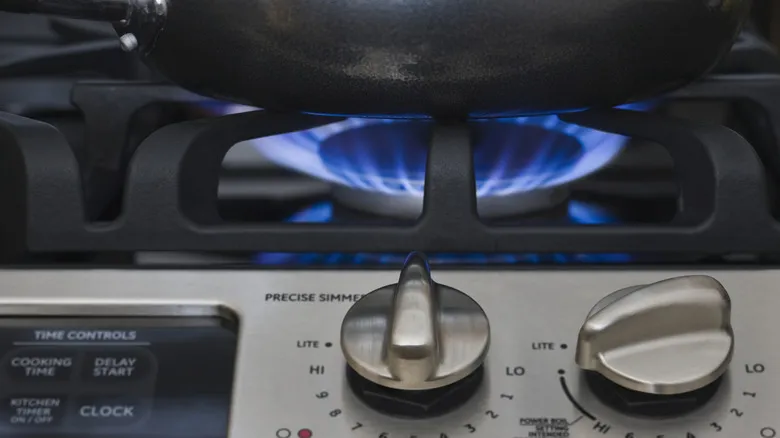
This breakfast staple is incredibly versatile. You can toss frozen hash browns into the air fryer, incorporate them into a delicious breakfast burrito, or even use them in a breakfast sandwich—just like McDonald's should. However, none of these options will be satisfying if the texture and consistency of the potatoes aren't right. Reheating frozen hash browns or adding them to a breakfast burrito or sandwich won't deliver the desired experience if they turn out mushy and lack that delightful crispy texture we expect from a great batch.
The ideal frying temperature for hash browns is around 350°F, which is considered medium heat. If the temperature is too low, "the potato will confit instead of forming a crust, causing it to absorb all the fat and fall apart," explains Vannesa Bordoy. Alex Mazzucca and Cara Duerr concur: "Frying at a low temperature will result in greasy hash browns rather than light and crispy ones. They will also end up soggy and not golden."
That said, be cautious not to crank the heat too high in your quest to avoid mushiness. "In the pursuit of achieving that perfect crispy crust, over-frying is a common mistake that leads to burnt potatoes," Bordoy cautions.
7. Using the wrong fat
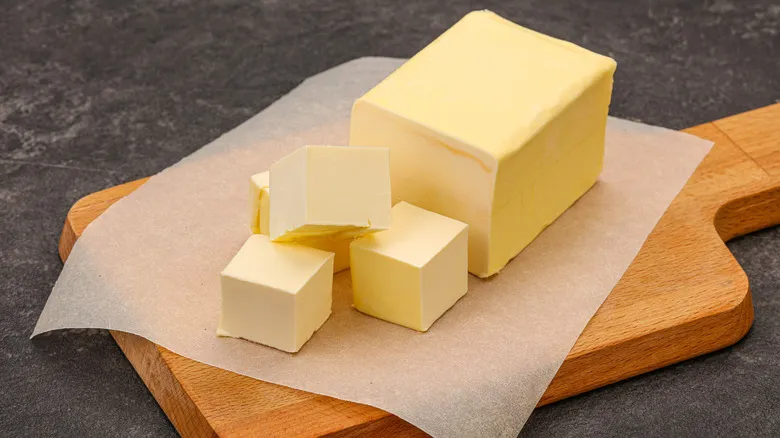
Fat is not just fat, contrary to popular belief. In reality, there is an astonishing range of characteristics among various oils, including vegetable, peanut, olive, and more. When you factor in butter and ghee, it becomes quite a puzzle. Fortunately, there are solutions.
To start, it's crucial to grasp the concept of smoke point, which refers to the temperature at which a fat begins to burn. At this point, the oil will visibly smoke, signaling that it is breaking down. "Regular butter burns too quickly, and the same is true for olive oil — both have relatively low smoke points," explains Vannesa Bordoy. For this reason, "It's best to use a high-heat oil when cooking hash browns; we recommend avocado oil and suggest steering clear of olive oil," advise Alex Mazzucca and Cara Duerr.
Both avocado and vegetable oils are suitable options due to their higher smoke points. If you don't have access to avocado or vegetable oil, or prefer not to make a trip to the store for just one item, you can easily purchase them online. Peanut oil also boasts a high smoke point, but its strong flavor can be overwhelming, so it’s best to avoid it unless you enjoy a peanut butter twist on your hash browns. Vannesa Bordoy also suggests using bacon fat for an incredible flavor boost. Lastly, if you're looking for a dairy option, ghee is a great choice, as the removal of milk solids gives it a high smoke point as well.
8. Getting the amount of oil wrong
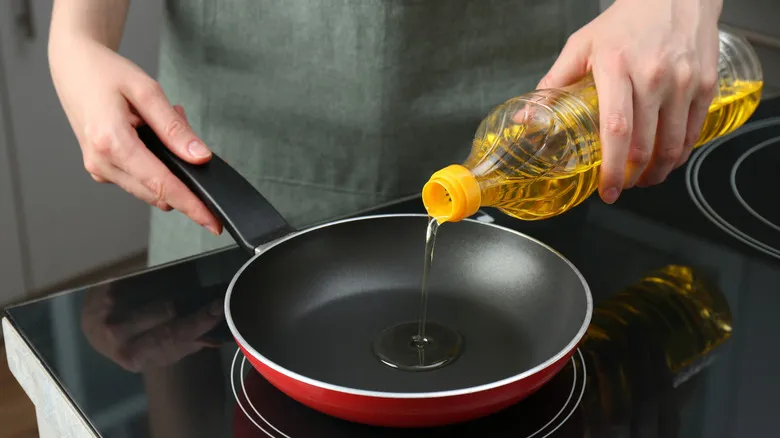
Surprisingly, there are two common pitfalls when it comes to using oil: using too much or too little. When you use insufficient oil, there isn't enough fat to evenly distribute heat to the potatoes, preventing them from becoming crispy. It can be tempting to reduce the amount of oil in breakfast dishes, especially indulgent ones like hash browns, but skimping on oil can result in burning and uneven cooking. "You generally want your hash browns to be about halfway submerged," say Alex Mazzucca and Cara Duerr. This can be tricky to gauge when you're just starting out, as you shouldn't add the hash browns until the oil is hot. Following a recipe can help you achieve the right oil-to-potato ratio more easily.
On the other hand, using too much oil can also create issues, as it may cause the hash browns to simmer in oil instead of frying. If you're concerned about overdoing it, Vannesa Bordoy suggests adding oil gradually until you reach the right amount: "Fats can be added slowly during the cooking process, but once added, they are difficult to remove," she explains. While you might not achieve perfect results on your first attempt by adding room-temperature oil to the cooking hash browns, this approach is preferable to completely submerging your potatoes from the beginning.
9. Crowding the pan
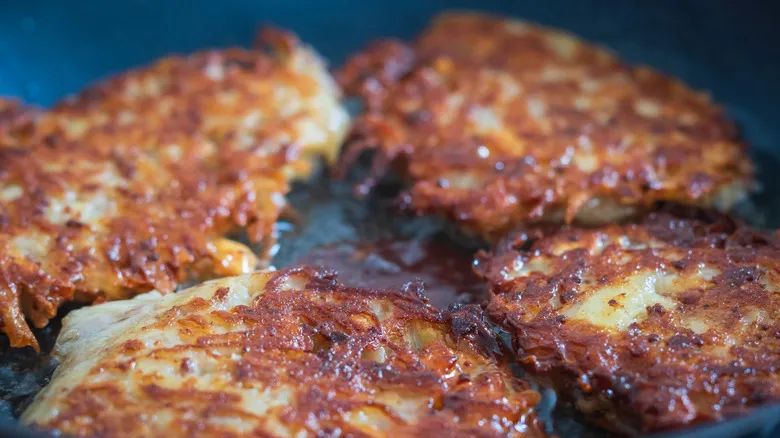
There are two primary methods for preparing hash browns: potato pancakes and a uniform round layer. You can opt for either style, but in both instances, it's crucial to avoid overcrowding the pan. The thinner you spread them, the crispier they will turn out. When the pan is too packed, you end up needing to create a thicker layer of potatoes to accommodate everything. This makes it difficult for the oil to penetrate the potatoes and achieve that desired crispiness, as the shreds end up pressed against each other, preventing the oil from getting in.
"This can lead to two extremes in the cooking process," says Vannesa Bordoy. "Some areas may become overcooked while others remain undercooked, resulting in both gummy and burnt sections." Not exactly appetizing, right?
Alex Mazzucca and Cara Duerr point out that "Cooking time will also increase if there are too many potatoes in the pan." While it might seem efficient to throw all the potatoes in at once, it's actually better to cook them in two separate batches. For a relaxed brunch with friends or a family dinner, consider serving in batches. Alternatively, you can keep them warm on a baking sheet in an oven set to 200°F.
10. Salting incorrectly
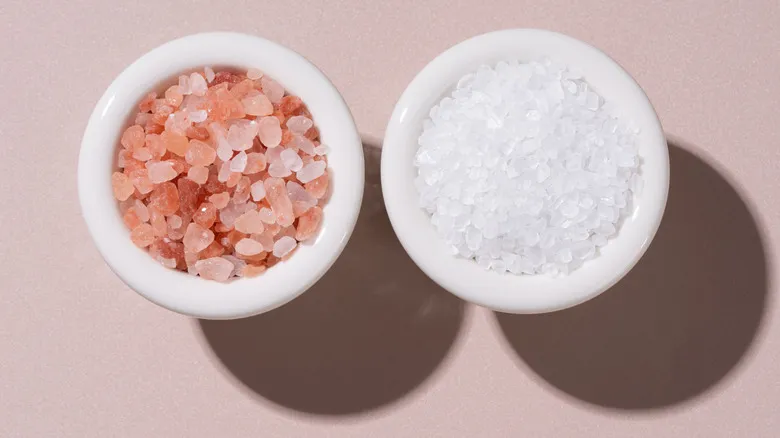
The timing of when to add salt is a topic of debate among chefs. This variation in advice is less about personal preferences and more about the specific food being prepared. For hash browns, the key concern is that if the shredded potatoes aren't completely dried before salting, the salt will extract moisture, resulting in soggy hash browns. Many cooks, however, are comfortable salting them during the cooking process; if the potatoes are sufficiently dry, it shouldn't pose a problem.
Regardless of your approach, always ensure they are well-seasoned before serving. "Our favorite tip for making hash browns truly delicious is to finish them with a sprinkle of flaky salt right after they come off the heat," say Alex Mazzucca and Cara Duerr. "We love them golden and perfectly salted."
11. Moving the potatoes before flipping or flipping too soon
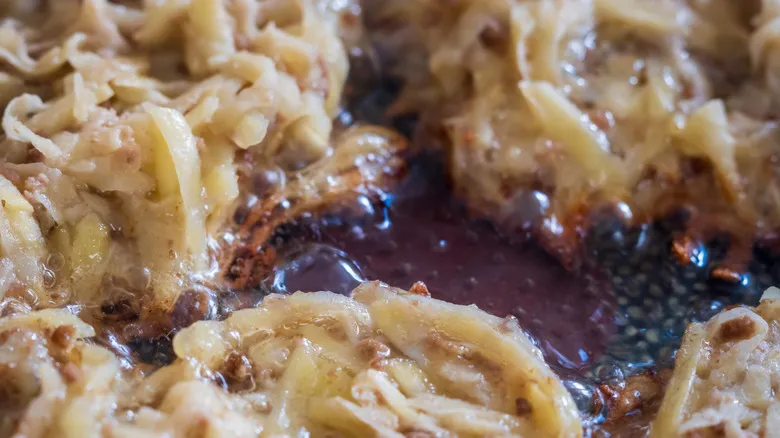
**Under-frying:** Avoid this common pitfall—yet it occurs frequently. Often stemming from a fear of burning, "Under-frying is the most prevalent error when preparing hash browns," say Alex Mazzucca and Cara Duerr. "Whether the oil isn’t hot enough or the potatoes are flipped too early, you’ll end up with soggy, pale hash browns instead of the desired golden, crispy texture." To prevent under-frying, start by setting the right temperature: 350°F, as previously mentioned. Next, exercise patience.
Refrain from moving the potatoes around while they cook, as this interferes with achieving a perfectly crispy bottom. Press them down into the pan in a uniform layer and leave them undisturbed throughout the cooking process. "A common mistake when flipping hash browns is doing it too soon," note Mazzucca and Duerr. "Ensure they are nicely golden before turning."
Most chefs understand the temptation to flip hash browns for a quick check, but it’s best to turn them only once. Allow them to cook for 5 to 6 minutes before checking for a crust. The second side typically cooks faster, around 4 minutes. While the exact cooking time may vary based on your stove, cookware, and potatoes, use these times as a starting point.
12. Using the wrong spatula

Spatula, schmatula ... does it really make a difference? As it turns out, it does. The ideal spatula is one that is slim enough to slide beneath the entire crispy layer and lift it off the pan. Thicker spatulas often end up scraping away the delicate interior of your hash browns, leaving the delicious crispy bits stuck to the bottom of the pan. No, thank you.
"When selecting a spatula," advise Alex Mazzucca and Cara Duerr, "a common error is opting for one that is too bulky, flimsy, or made of plastic. Our top choice is a fish spatula." You might also find it referred to online as a fish turner. Another frequent issue? "Especially at home, people often prioritize looks over functionality," notes Vannesa Bordoy. "Choose a sturdy spatula that won't break or melt!"
Recommended

The Air Fryer Is The Secret To Perfect Croutons You'll Make On Repeat

This Simple Burger Hack Will Give You The Perfect Patties Every Time
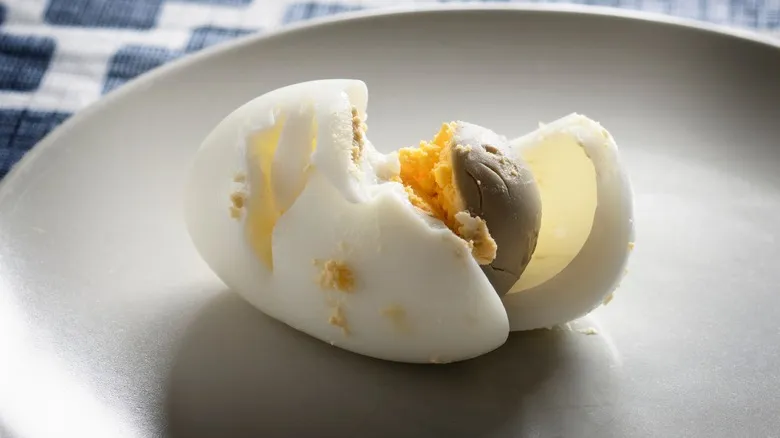
What's Turning The Yolks Of Your Hard-Boiled Eggs Green (And How To Stop It)
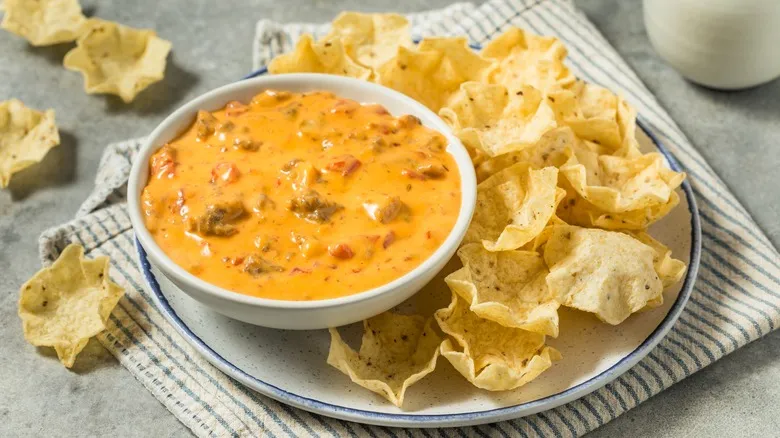
The Simple Method For Perfectly Reheated Nacho Cheese Sauce
Next up

